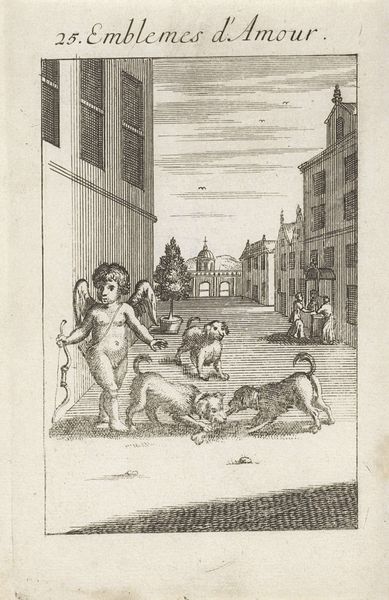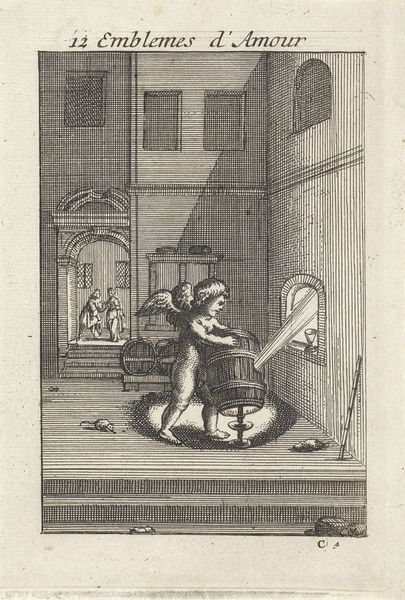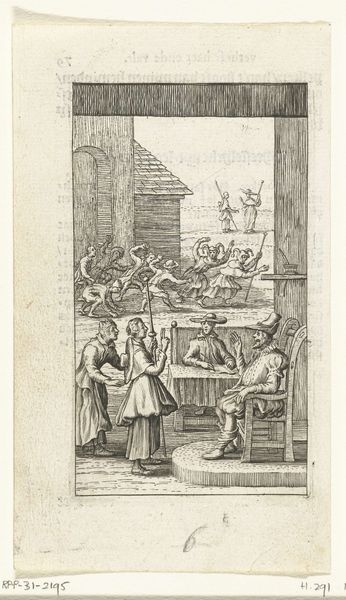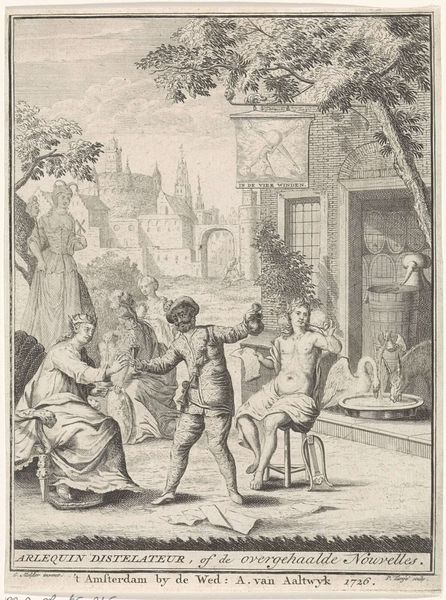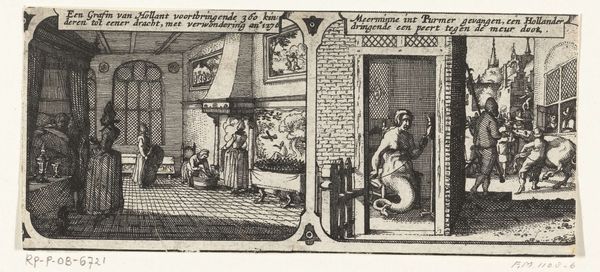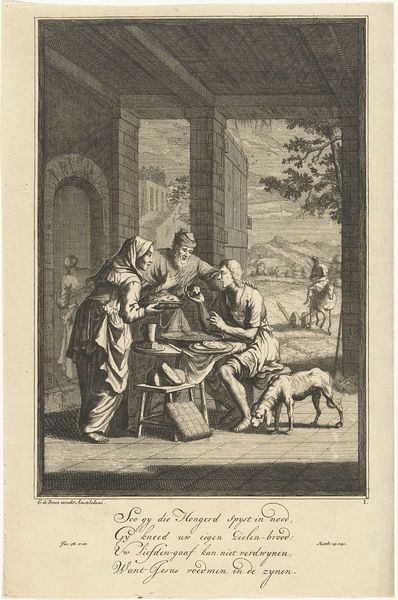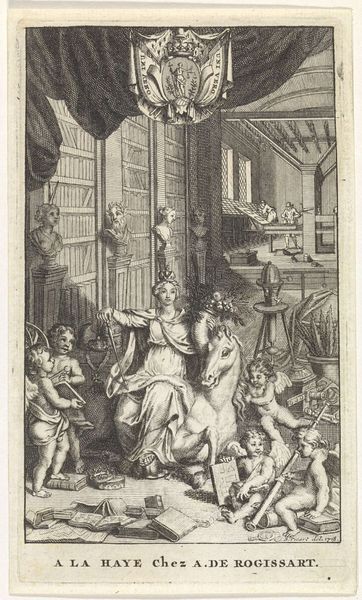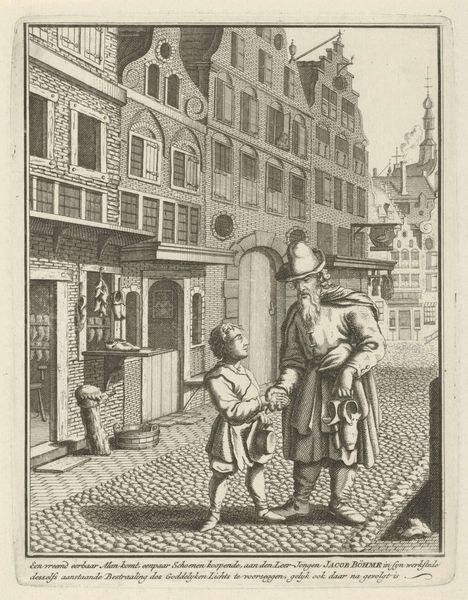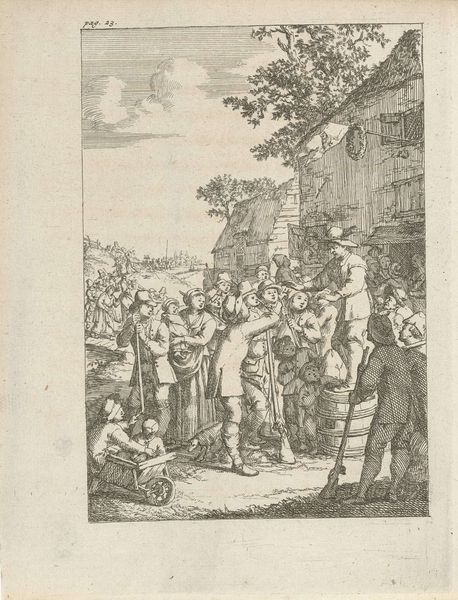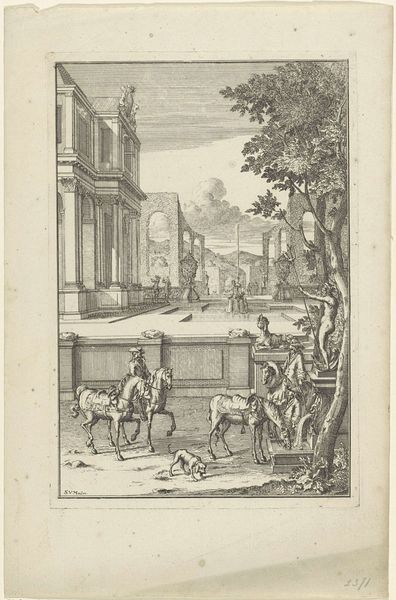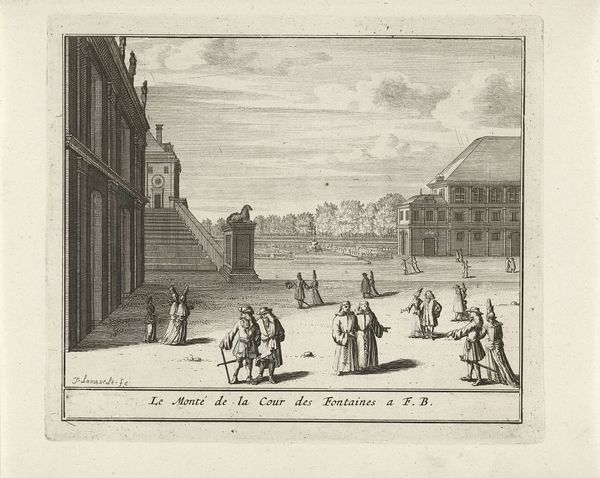
intaglio, engraving
#
allegory
#
baroque
#
intaglio
#
old engraving style
#
figuration
#
pen-ink sketch
#
line
#
genre-painting
#
history-painting
#
engraving
Dimensions: height 145 mm, width 95 mm
Copyright: Rijks Museum: Open Domain
Curator: This piece titled "Amor bij een vrouw in verwarring", which translates to "Cupid with a woman in confusion", was created around 1686 by Jan van Vianen. It's an engraving, currently held here at the Rijksmuseum. Editor: It’s certainly busy, isn’t it? My first impression is one of theatricality, like a stage set, with all these architectural features and multiple figures crammed together. And is that Cupid leading a dog on a leash? It’s quite unusual. Curator: Indeed. The architecture situates the scene within a specific social context—likely an affluent urban setting. These imposing buildings speak to the era's growing emphasis on commerce and social hierarchies. The rising merchant class increasingly sought to assert their place within society through these visual statements. Editor: Absolutely, it screams Baroque! Look at the allegorical elements at play, almost like visual puzzles. A woman is tending to two figures atop what seems to be a tomb or stage, and a woman watches the happenings from an opening in the wall of the home. All beneath an inscription reading "4 Emblems of Amor". Cupid appears somewhat mischievous, almost petulant with the dog at his side. There are so many possible interpretations, depending on how you unpack the imagery. Curator: And it's crucial to remember the role of prints like this. They functioned as visual communication tools, disseminating ideas and moral concepts across society. Jan van Vianen and his contemporaries were actively involved in shaping the visual culture of the Dutch Golden Age through allegorical works that held significance for the merchant class, providing social commentary through their emblematic narratives. Editor: Precisely. Notice, too, how Cupid's action, leading a dog, might allude to the pursuit of love, a path that is not always smooth. Even the fact he is approaching an inscription and tomb possibly warns of the danger of Cupid's work, perhaps he brings hurt and even pain? All very in keeping with Baroque art. Curator: Yes, while this work offers visual enjoyment and amusement, the subject serves as a poignant reminder about the power of imagery and its purpose as moral compass during its historical context. Editor: For me, this engraving sparks curiosity, it provides more questions than answers! The composition and the somewhat frenetic energy invites viewers to look for those cultural, almost hidden symbols that give Baroque art its particular richness and flavor.
Comments
No comments
Be the first to comment and join the conversation on the ultimate creative platform.

